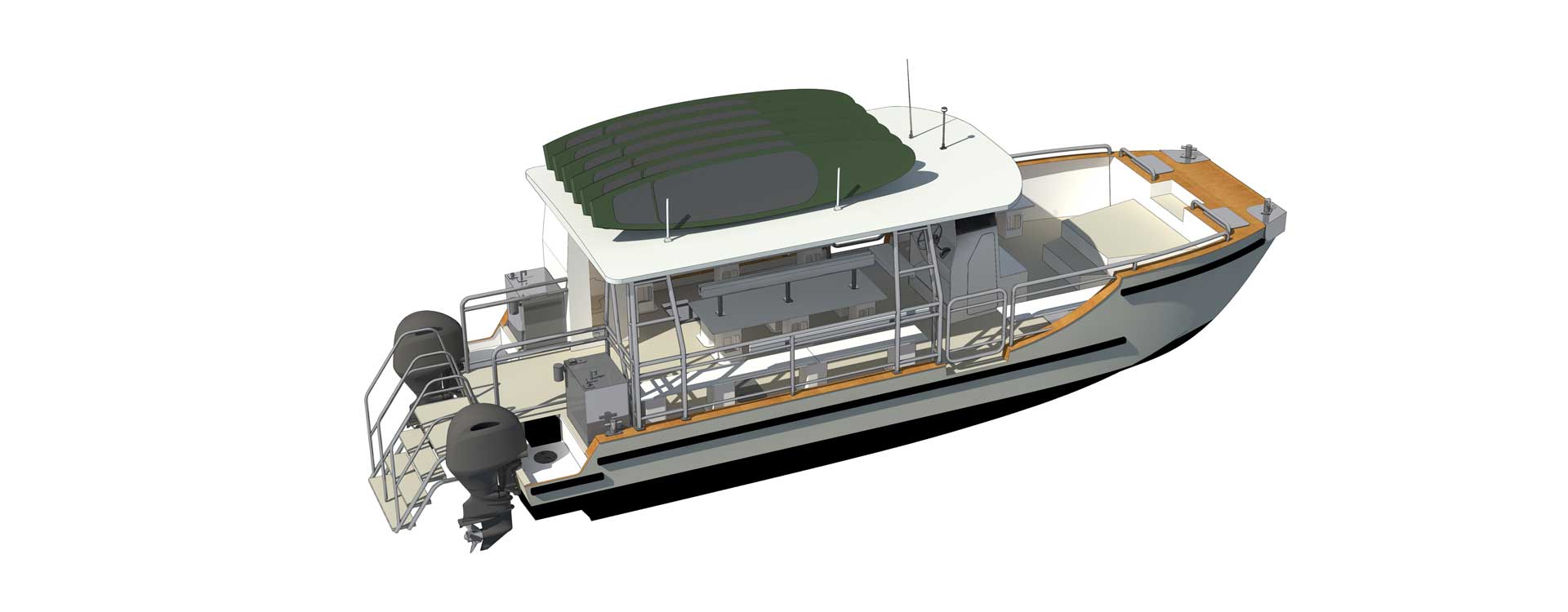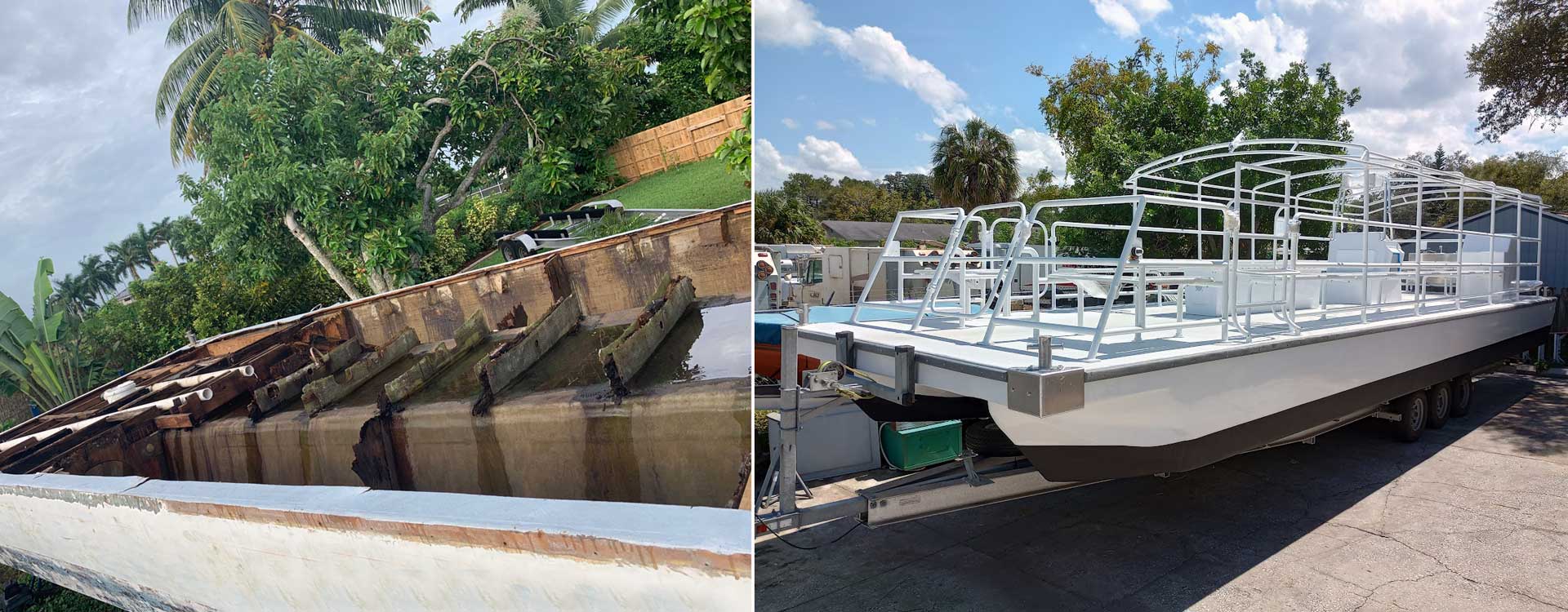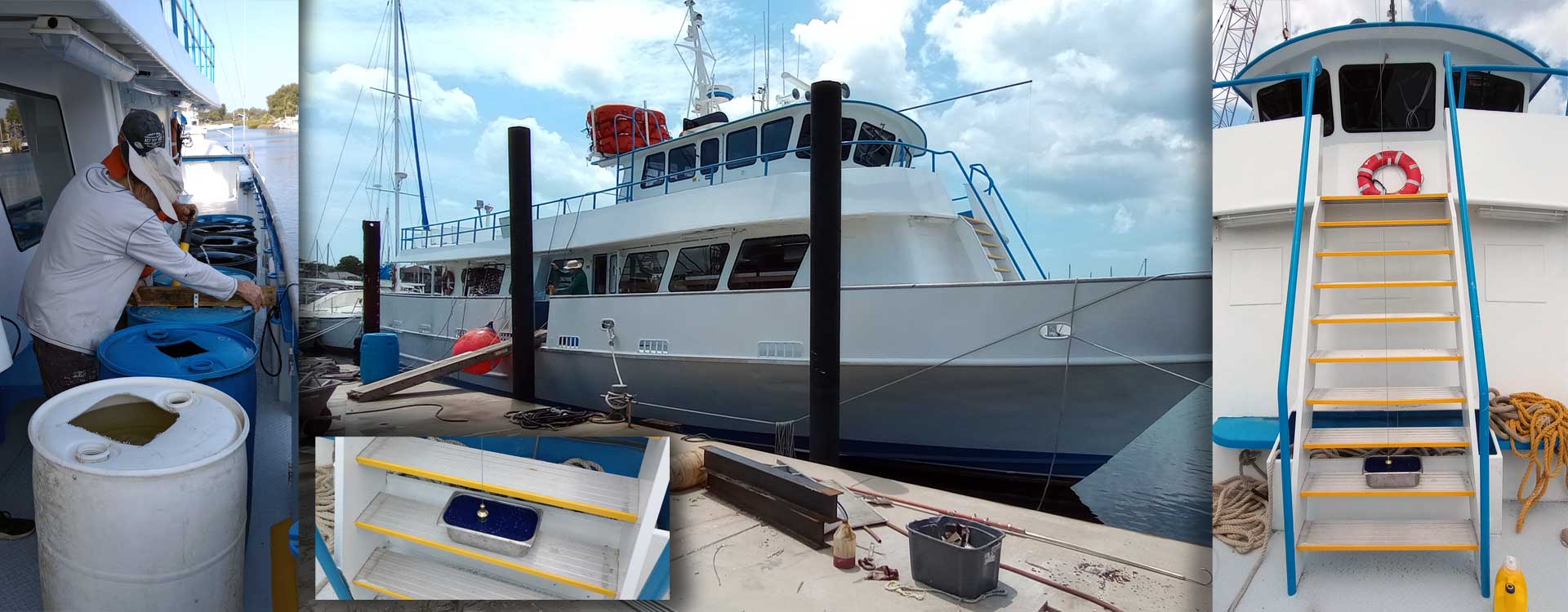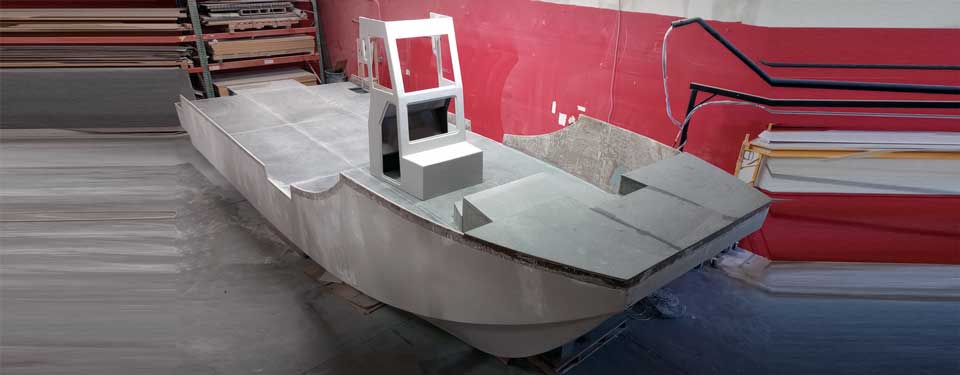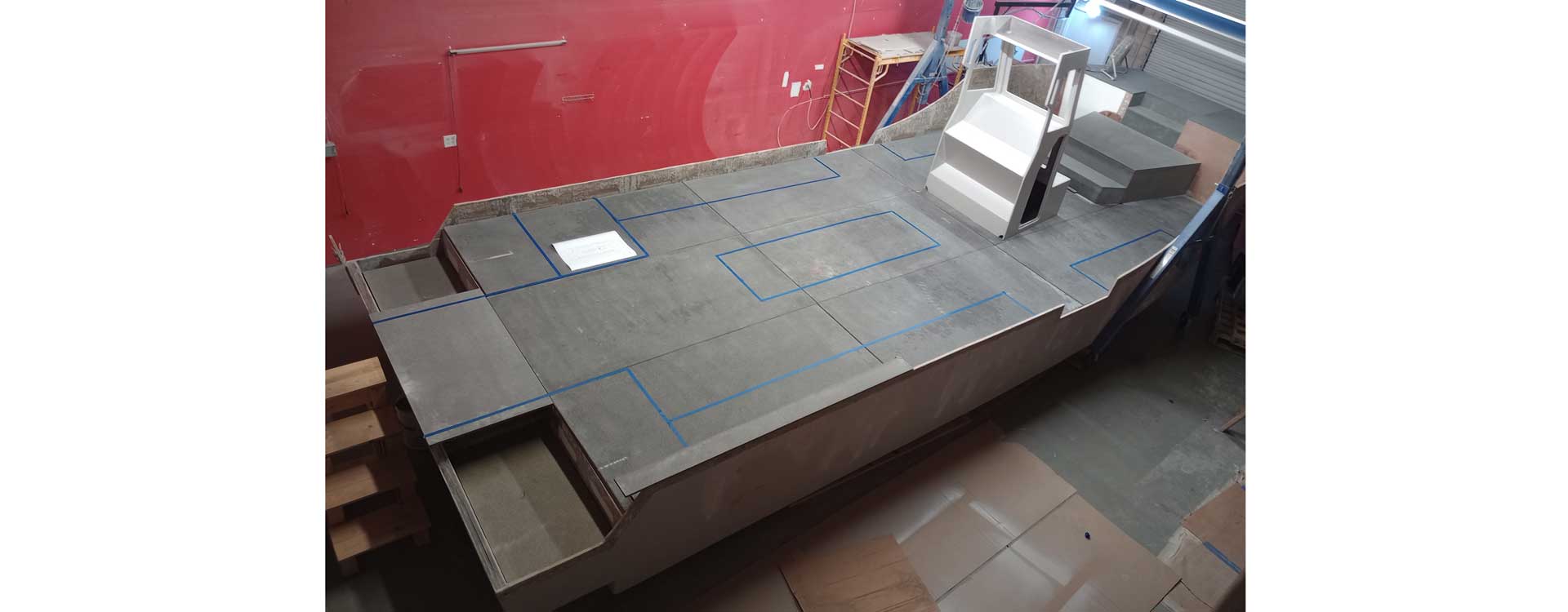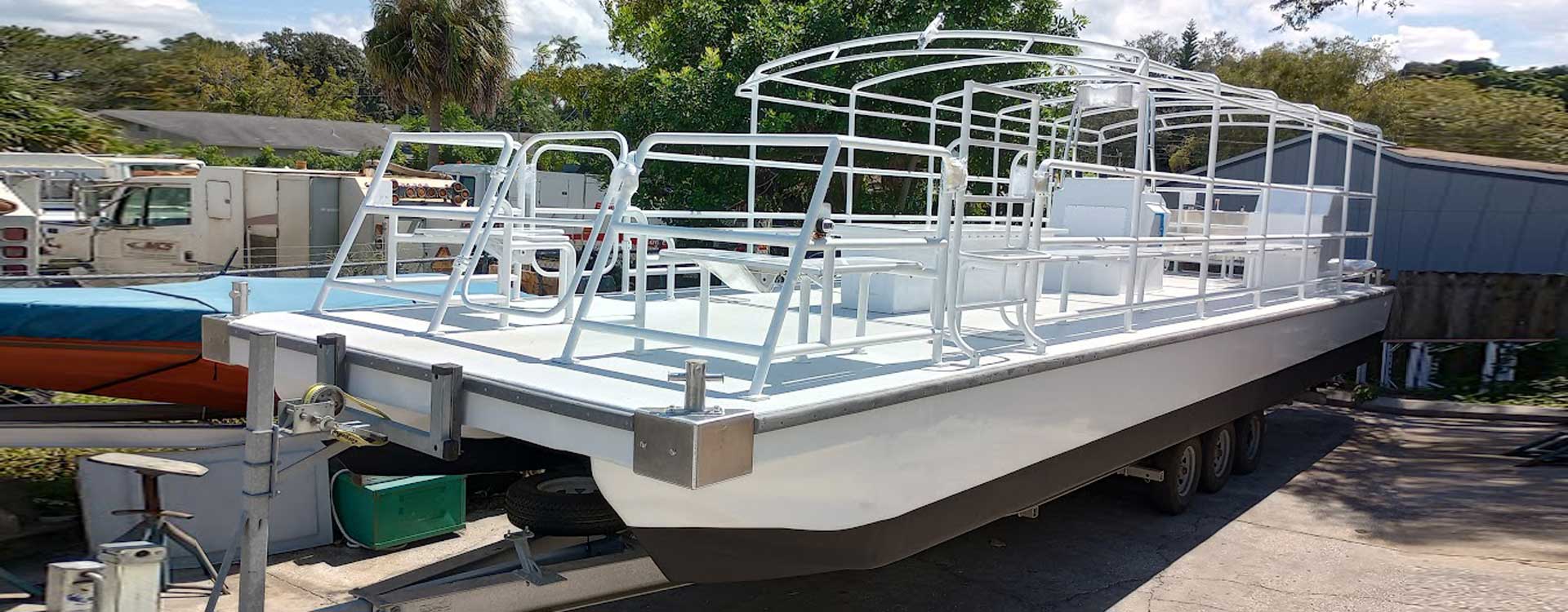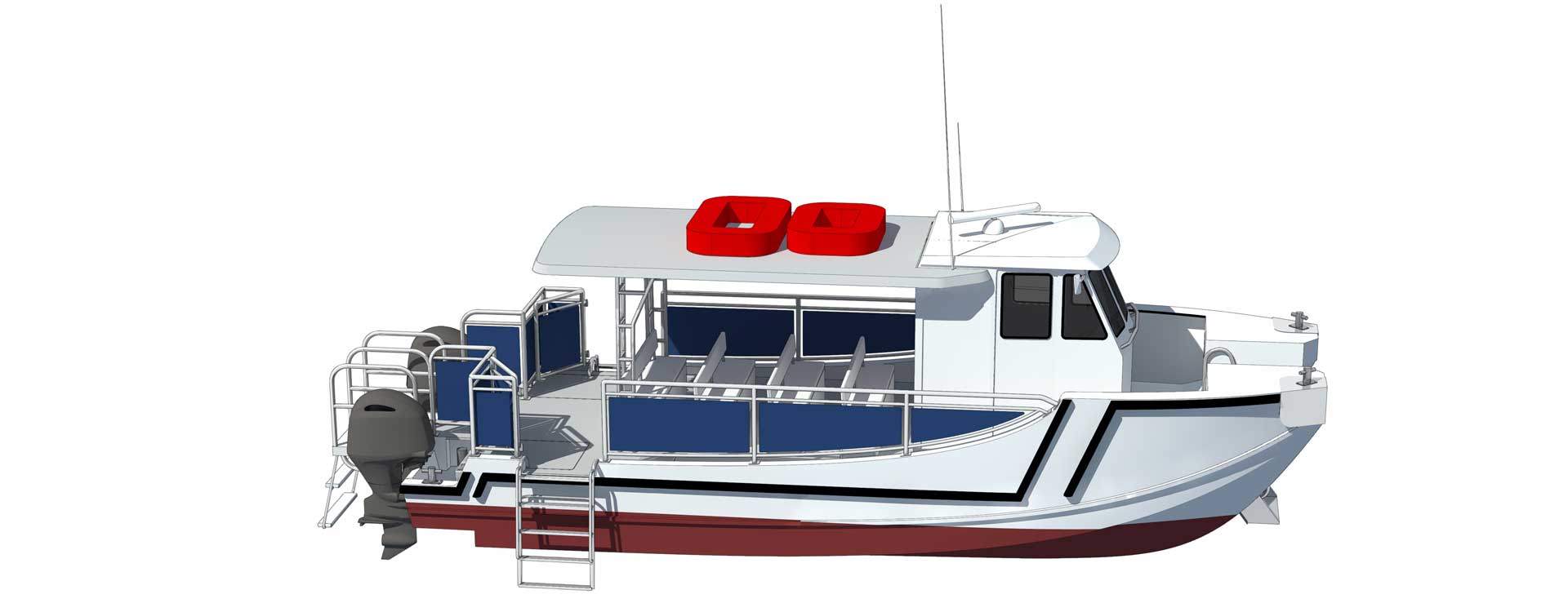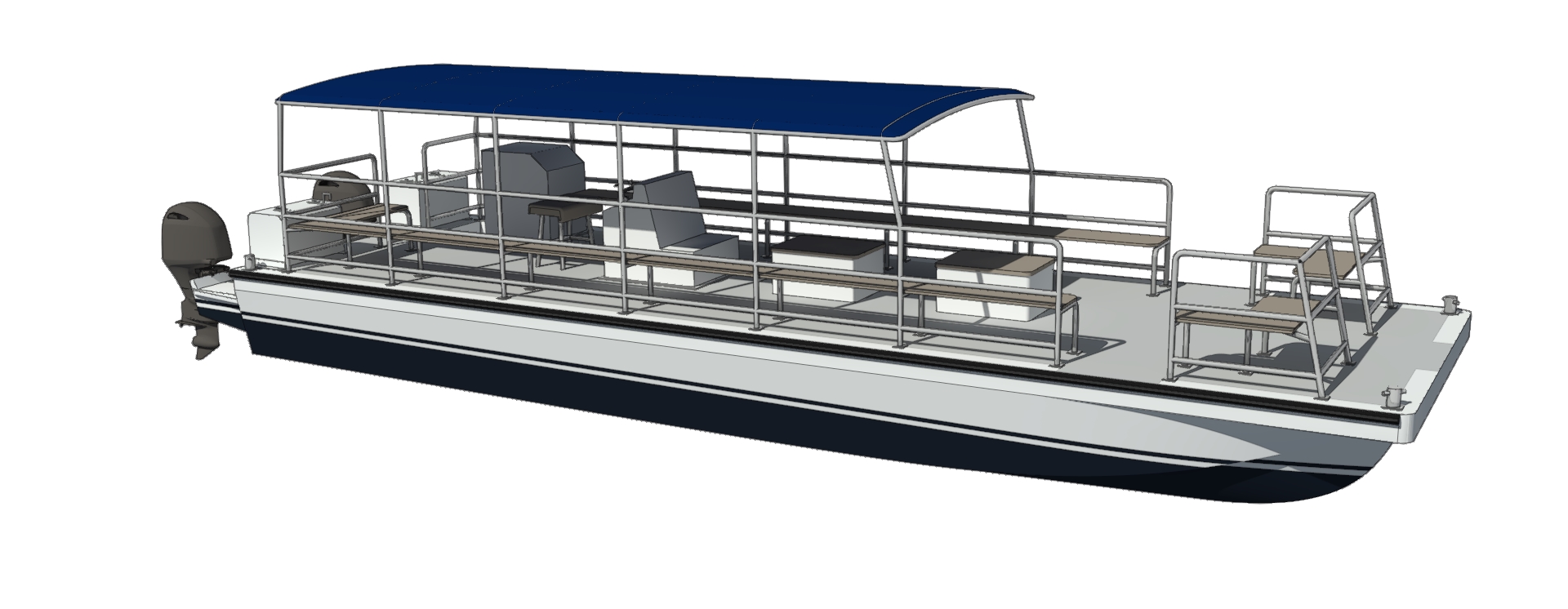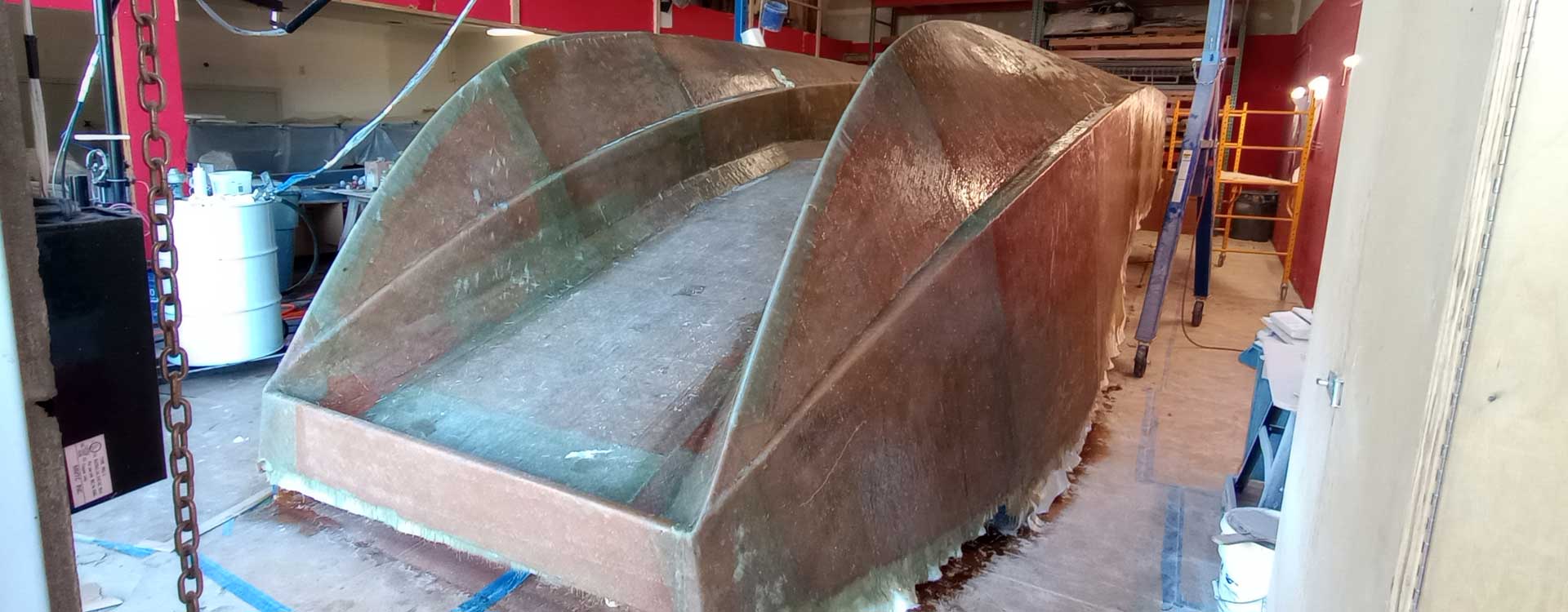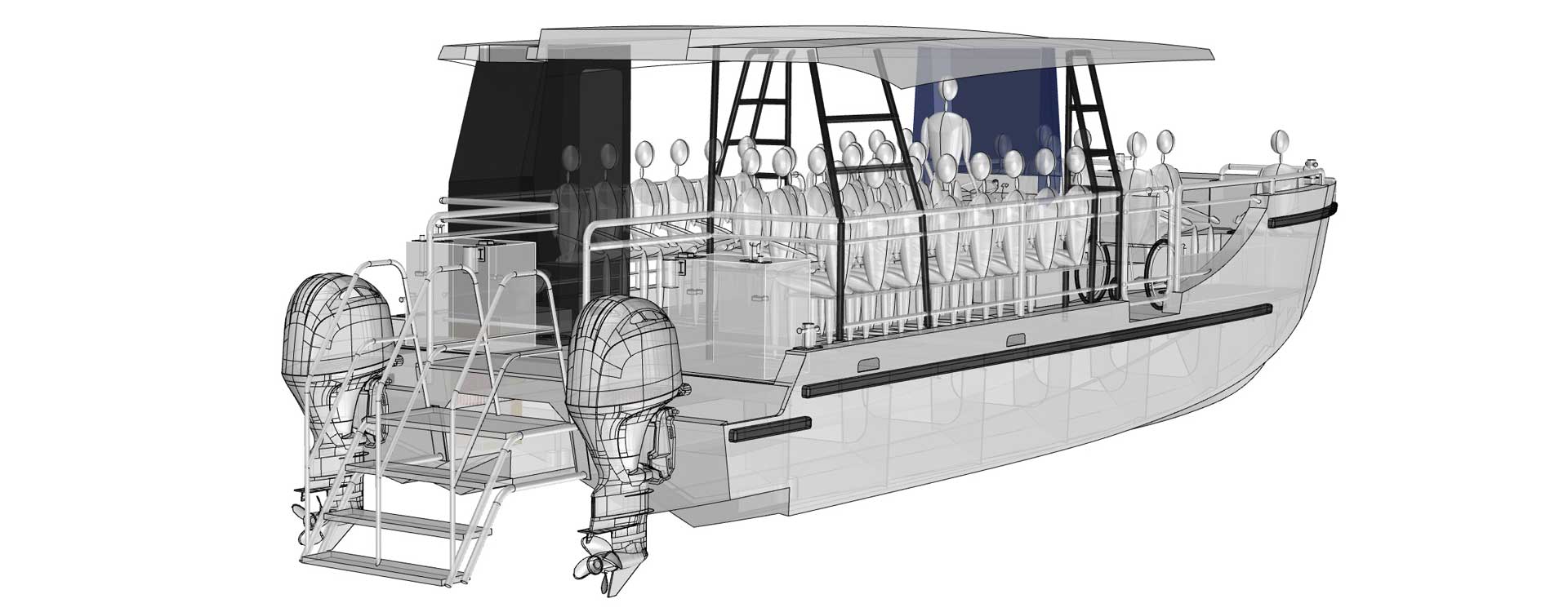INSPECTED VESSELS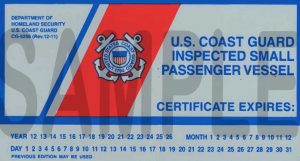
NEW CONSTRUCTION
Our Inspected Tour Boats are specifically designed to be certified to 46CFR Subchapter T Small Passenger Vessels by the USCG. We design and build them in-house to meet or exceed ABS High Speed Craft and we can customize the deck layout to fit your specific needs. All our components are modeled and CNC’d right here in Tarpon Springs FL.
We work with the local USCG inspectors and the Marine Safety Center, and we provide support and drawings to meet their requirements, after which all documentation is transferred to your local USCG sector for final inspection.
EXISTING VESSELS
•Repair of Hurricane Damage or Collision.
•Electrical System Design & Upgrade
•Stability Work including Deadweight Survey and Incline Experiment.
•Optimization of Passengers Permitted
•Change of Route and Waters
•Lapsed COI
If you currently own a COI tour boat or passenger boat requiring repairs or upgrade which will require Coast Guard re-inspection, we offer consulting services to find the best solution to get you back in operation with minimal delay. We can get in touch with your inspector on your behalf to identify problem areas, and prepare drawings in conjunction with your technician or boat yard that will satisfy your OCMI and the Marine Safety Center, in a way that is economically viable for you. Subject to space availability and constraint, we can take over the repair in house, providing you with a convenient turn-key solution.
What is a Coast Guard Inspected Vessel?
An Inspected Vessel is a boat inspected by the Coast Guard and that has been issued a Certificate of Inspection, often referred to as a COI. Vessels require a USCG inspection when they’re carrying more than six paying passengers. Once the vessel has been inspected and approved by the inspector, a CG-841 – Certificate of Inspection is issued. All tour boats and passenger boats in the US fall under this jurisdiction if they carry more than 6 paying passengers.
What is on a Certificate of Inspection?
The certificates of inspection, or COI, issued to United States vessels describe the vessel, the route the vessel may travel, the minimum manning requirements, the safety equipment and appliances required to be on board, the total number of persons that may be carried, and the names of the owners and operators.
What is Subchapter T—Small Passenger Vessels (Under 100 Gross Tons) and how does it apply?
If you plan to carry more than six (6) paying passengers, the USCG requires that the vessel be inspected periodically, because the Coast Guard is ultimately responsible for their safety. All inspected boats under 100 gross tons carrying 149 passengers or less are to be inspected under Subchapter T of 46CFR. In practice, this means that your local Coast Guard Sector is responsible for the entire fleet of inspected vessel under their jurisdiction.
The obtention of a Certificate of Inspection, or COI, involves submitting plans and drawings for approval to the USCG’s Marine Safety Center. A local USCG inspector visits periodically during construction to ensure that the approved drawings are followed diligently. Once the vessel is completed, it is then tested for stability, either via a Simplified Stability Test or a more extensive Deadweight Survey and Incline Experiment. It is expected that one can achieve a higher passenger allowance using a Survey and Incline, but the process is significantly more involved and typically requires the hiring of a Naval Architect. Once the vessel passes Stability, it then receives its Certificate of Inspection, allowing it to carry paying passengers, but it is still subjected to periodic in-the-water and out-of-the-water inspections by your local USCG inspector.
How to get a COI on a new boat?
When you purchase a tour boat from Bedard Marine, you do not need to worry about any of this: We will have already submitted all required plans and drawing to the MSC, and obtained approval. Our friendly USCG Sector St Petersburg Inspectors will have visited us many times to monitor and document the project. We will complete Stability Work locally, so your new tour boat will receive a Stability Letter that will carry over to your own USCG Sector when you take possession. This is advantageous for two reasons: First, this letter moves with the boat, so both at purchase and upon resale, the stability letter will be transferred with the boat, negating the need to redo stability at the new location. This is in contrast to the fact that Simplified Stability has to be done in the sector in which the boat will operate. The second advantage is that the full stability work has a thinner margin or error, allowing the boat to take more passengers. In other words, Simplified Stability Test is not meant to be performed by professionals, therefore the Coast Guard increased the factor of safety in the calculations, therefore reducing capacity.
Why buy a COI boat from Bedard Marine?
We know that your boat is your income: Each day not taking passengers out costs you money, especially so if you are constrained by a short season. Our passenger boats are designed and built to minimize downtime and maintenance.
We build exclusively in vinylester because this resin is vastly superior to polyester. The price difference between the two, when put in context of the total vessel purchase price, does not justify to compromise in quality.
We also do not use any wood or plywood in the construction of our commercial boats, other than cosmetically. This might strike you funny as we sell marine plywood and wooden boat kits, but the reason is simple: Tour boats just do not get the kind of care that recreational boats do. They are maintained by employees and contractors, driven by hired captains and their main purpose is to make money, each and every day. For this reason we use composite panels where other builders would use plywood, which protects your value, both while you own it and at resale.
Our electrical systems are simple and rugged. Each of them is a semi-custom variation of a proven design that was submitted and passed by MSC countless times. We allow three times less voltage drop than that required by the regs.
